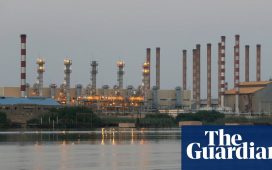
New figures published by the Scottish Salmon Producers Organisation (SSPO) show the limited extent to which salmon producers have used the derogations authorised by environmental regulators last year to help the sector cope with coronavirus.
Only one in five Scottish salmon farms have had to use new rules allowing them to keep fish in the water for longer – and only one in 20 have used the flexibility on medicine use.
The SSPO said the willingness of Scotland’s environmental regulator to introduce a more flexible approach had helped salmon farmers cope with the impacts of both Covid-19 and Brexit, even though only a small minority of sites had used the new flexibility.
Working with the salmon farming sector, the Scottish Environment Protection Agency (SEPA) introduced a new level of flexibility on positions in March 2020 to mitigate the impact of the pandemic.
This has allowed both parties to anticipate changing circumstances and led to agreement on temporary positions regarding biomass limits – the weight of fish in pens – treatments and compliance monitoring.
The new figures show that across the sector, 21% of sites – 44 from 210 farms – applied to make use of the additional peak biomass position, of which only 36 sites have, to date, made use of the position.
This gave farmers the option of increasing peak biomass across those sites by an average 16%, or approximately 13,000 tonnes to 92,000 tonnes. The average length of time where biomass volumes were increased was 40 days.
In terms of the position on medicine use, nine sites used the option which provided the opportunity for treatments at these sites to be performed in a shorter time period.
Anne Anderson, director of sustainability at the SSPO, said: “This regulatory flexibility, which has been used sparingly by our members, has supported the salmon farming sector while safeguarding fish health and welfare throughout this extraordinary period.
“The decision of companies to conduct site risk assessments has also protected the environment.”
The SEPA regulatory position for aquaculture established a restricted formal notification process to enable additional peak biomass to be allowed at sites which met the risk assessment criteria. This enabled a range of 10 to 25% additional peak biomass to be held at farming locations.
Permissions allow for up to 10% in high risk areas, 20% in medium and 25% in low risk areas.
From April to end September 2020, SEPA also set a regulatory position which supported farms, allowing them to undertake swifter medicinal bath treatments through requirement to meet an established set of risk assessment criteria.
Last year, the Scottish salmon sector launched a Sustainability Charter, detailing five pledges and 41 actions to ensure producers grow healthy, nutritious food in the most responsible way.
A report last month claimed that the short-term pursuit of profits by salmon producers is creating significant unaccounted environmental and social costs – which include growing mortality rates, damage to local ecosystems, pressure on wild fish stocks and poor fish welfare.
London-based research organisation Just Economics’s analysis put the cumulative costs to economies, society and the environment since 2013 at almost $50bn.
Don’t miss the latest headlines with our twice-daily newsletter – sign up here for free.












